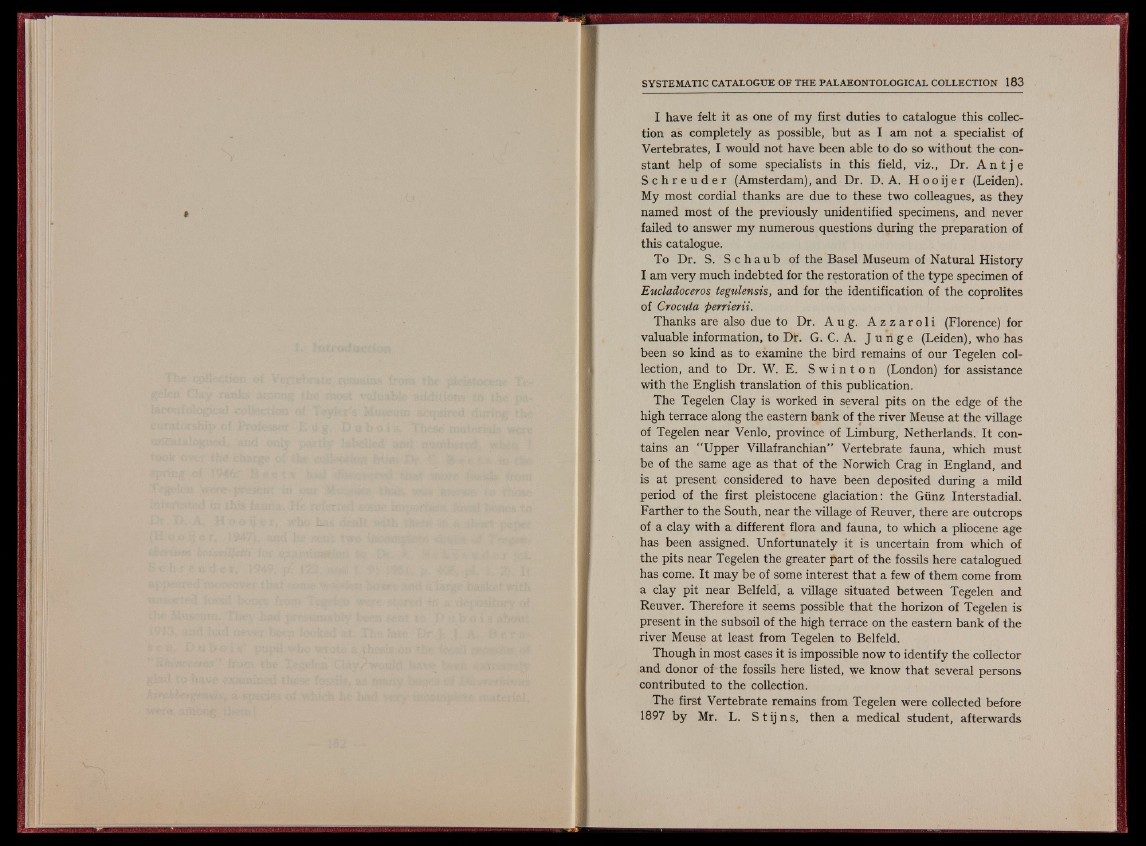
I have felt it as one of my first duties to catalogue this collection
as completely as possible, but as I am not a specialist of
Vertebrates, I would not have been able to do so without the constant
help of some specialists in this field, viz., Dr. A n t j e
S c h r e u d e r (Amsterdam), and Dr. D. A. H o o ij e r (Leiden).
My most cordial thanks are due to these two colleagues, as they
named most of the previously unidentified specimens, and never
failed to answer my numerous questions during the preparation of
this catalogue.
To Dr. S. S c h a u b of the Basel Museum of Natural History
I am very much indebted for the restoration of the type specimen of
Eucladoceros tegulensis, and for the identification of the coprolites
of Crocuta perrierii.
Thanks are also due to Dr. Aug. Az z a r o l i (Florence) for
valuable information, to Dr. G. C. A. J u n g e (Leiden), who has
been so kind as to examine the bird remains of our Tegelen collection,
and to Dr. W. E. S w i n t o n (London) for assistance
with the English translation of this publication.
The Tegelen Clay is worked in several pits on the edge of the
high terrace along the eastern bank of the river Meuse at the village
of Tegelen near Venlo, province of Limburg, Netherlands. It contains
an "Upper Villafranchian” Vertebrate fauna, which must
be of the same age as that of the Norwich Crag in England, and
is at present considered to have been deposited during a mild
period of the first pleistocene glaciation: the Gxinz Interstadial.
Farther to the South, near the village of Reuver, there are outcrops
of a clay with a different flora and fauna, to which a pliocene age
has been assigned. Unfortunately it is uncertain from which of
the pits near Tegelen the greater part of the fossils here catalogued
has come. It may be of some interest that a few of them come from
a clay pit near Belfeld, a village situated between Tegelen and
Reuver. Therefore it seems possible that the horizon of Tegelen is
present in the subsoil of the high terrace on the eastern bank of the
river Meuse at least from Tegelen to Belfeld.
Though in most cases it is impossible now to identify the collector
and donor of the fossils here listed, we know that several persons
contributed to the collection.
The first Vertebrate remains from Tegelen were collected before
1897 by Mr. L. St i jns, then a medical student, afterwards